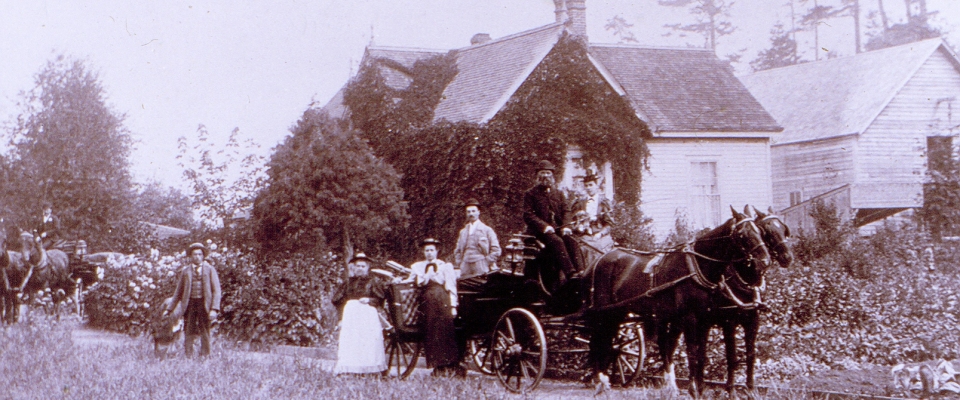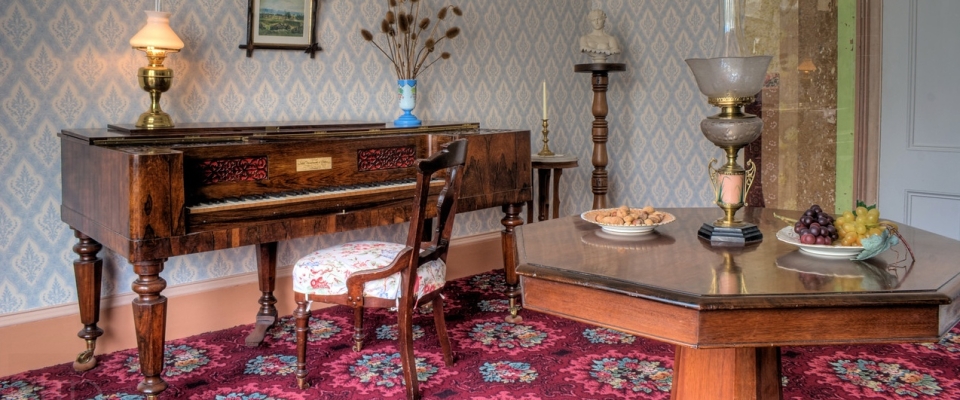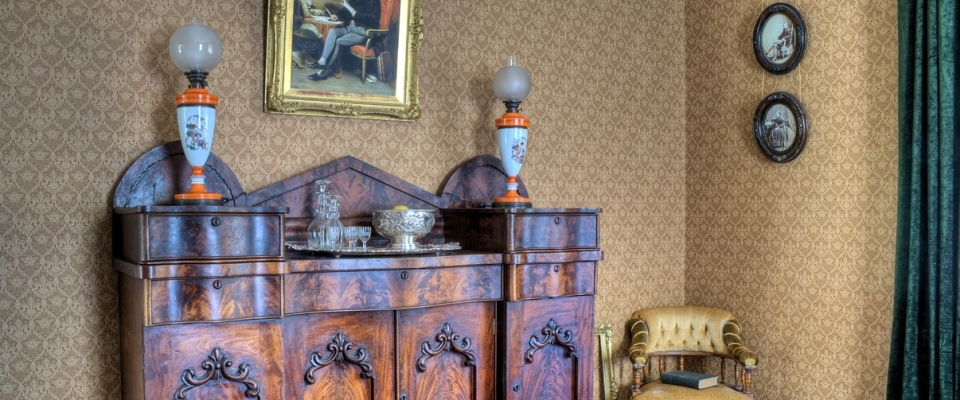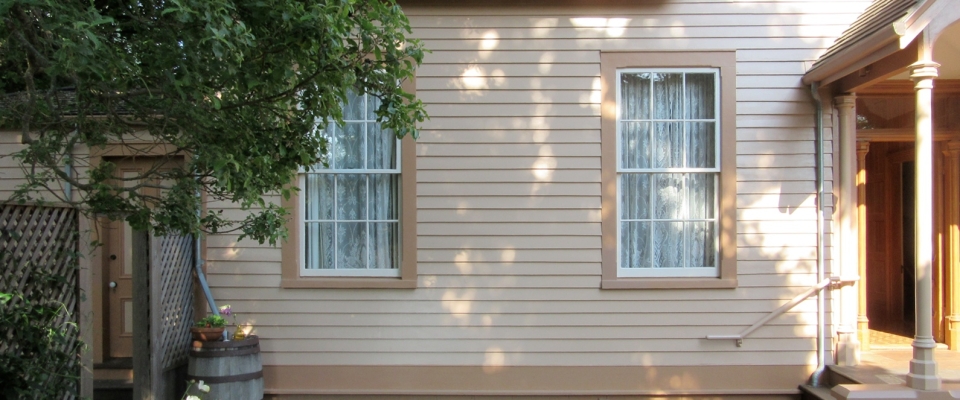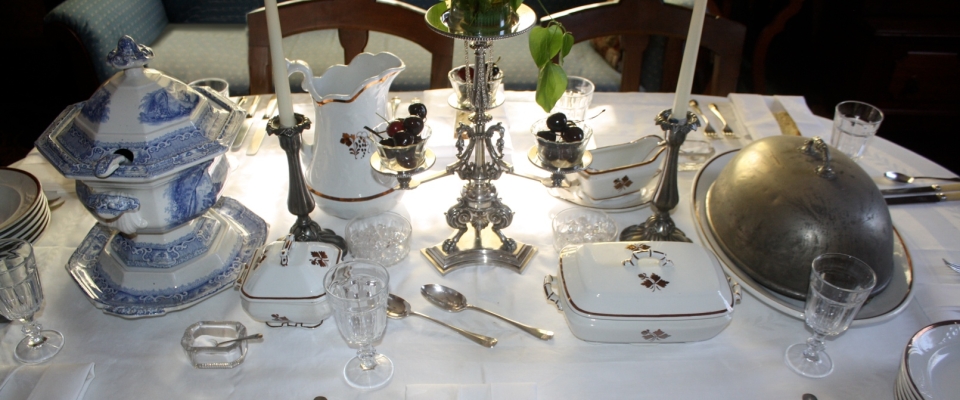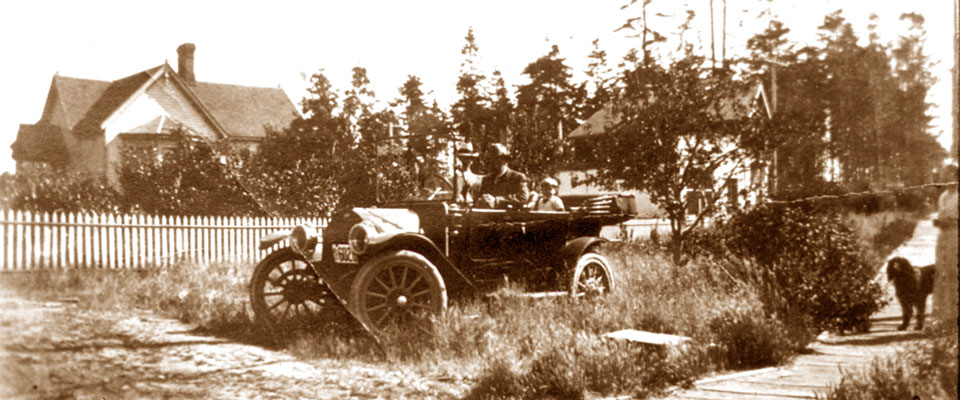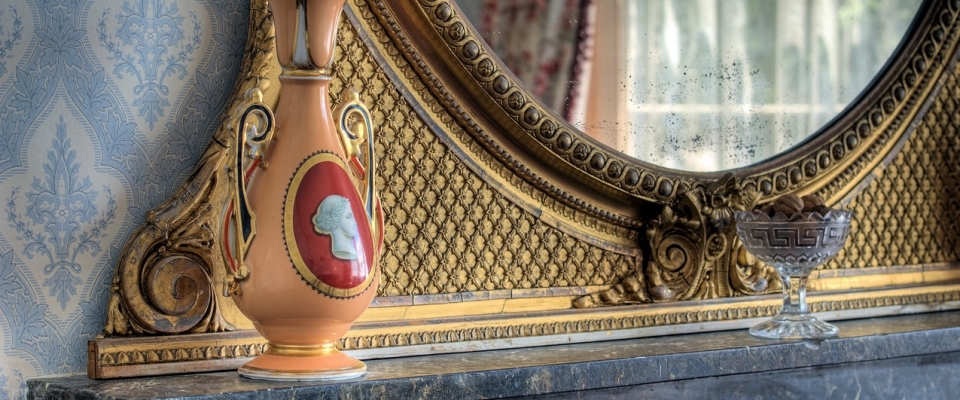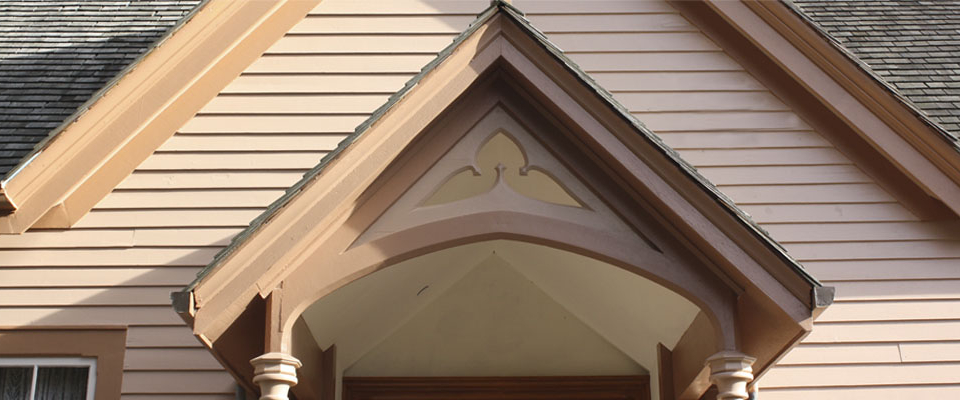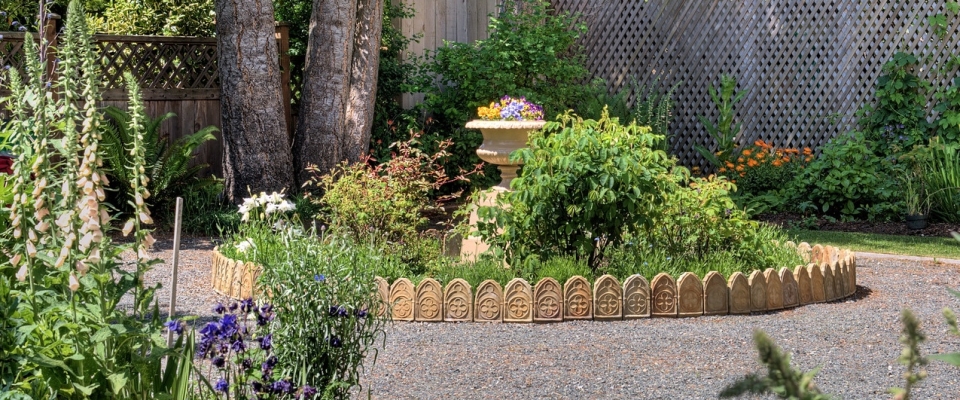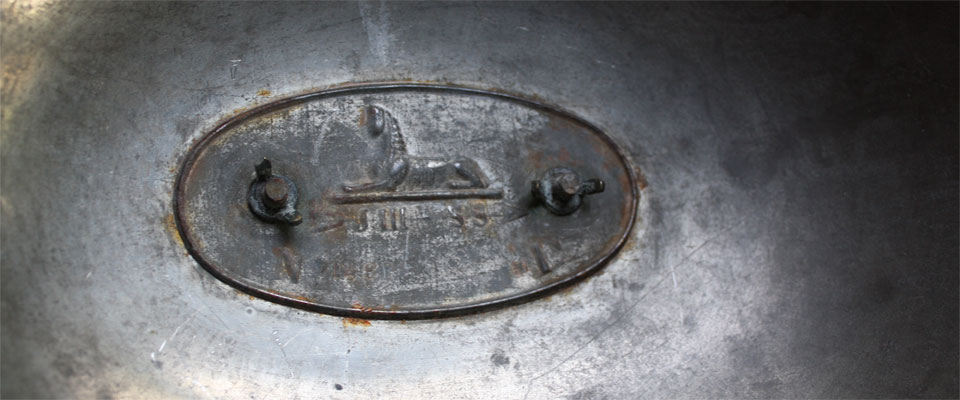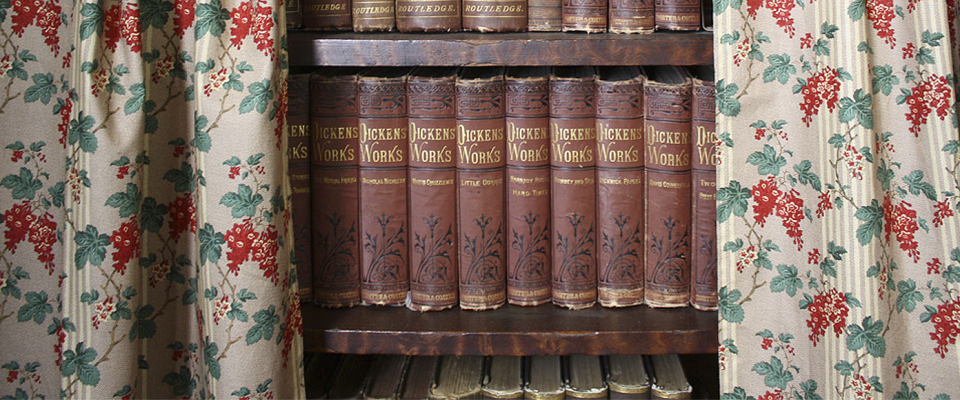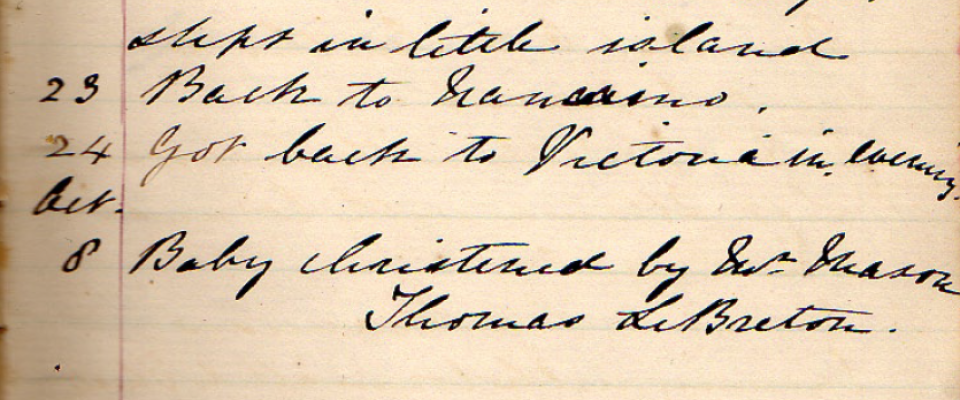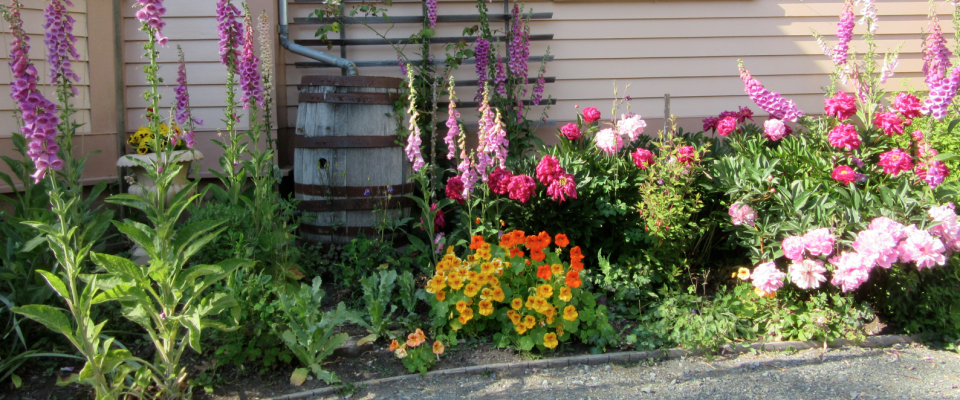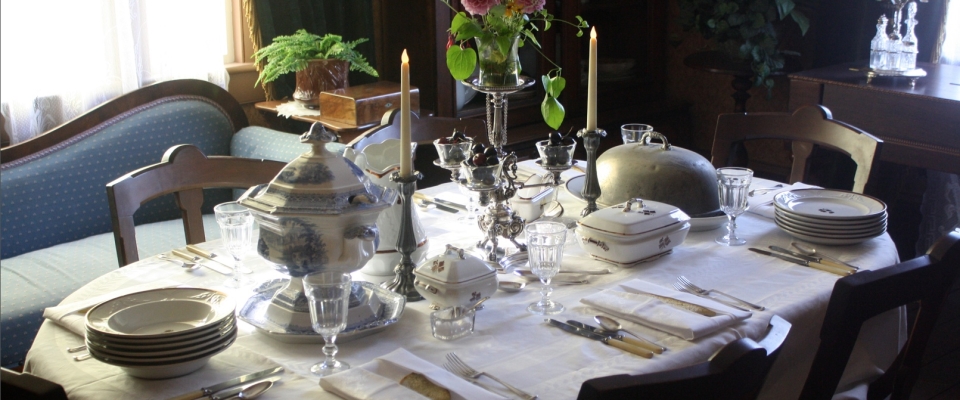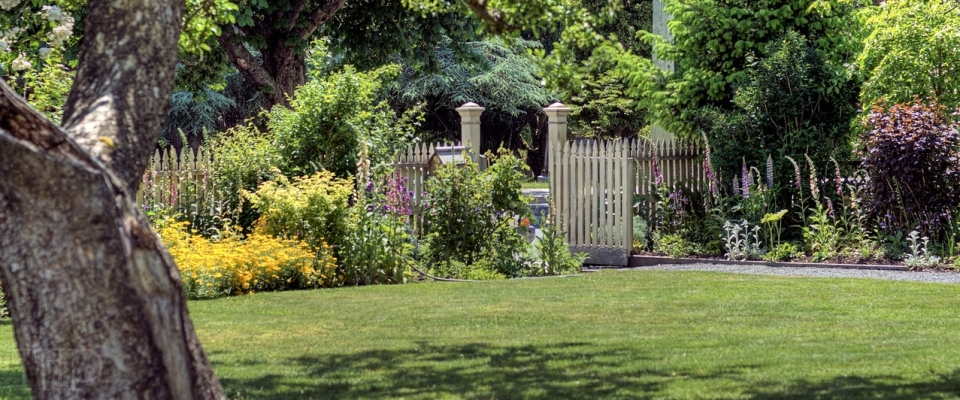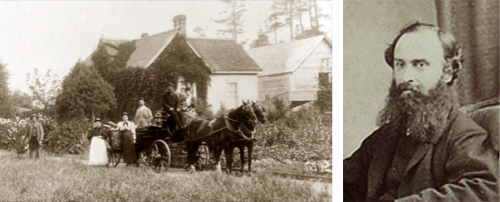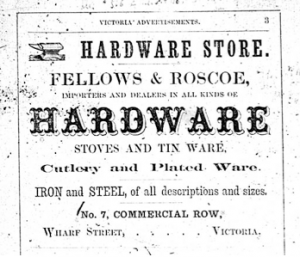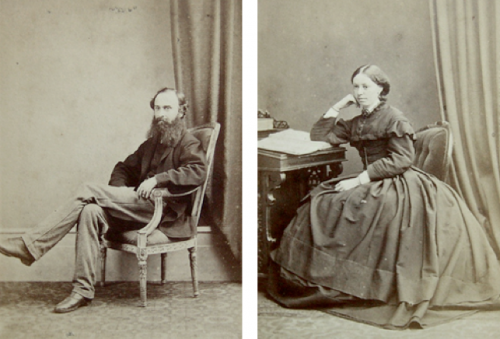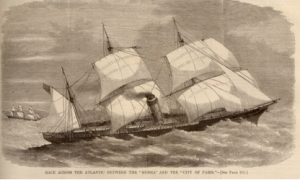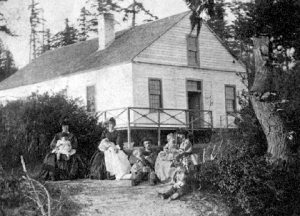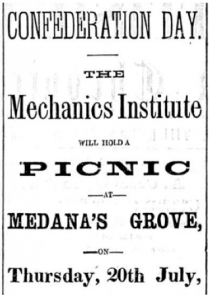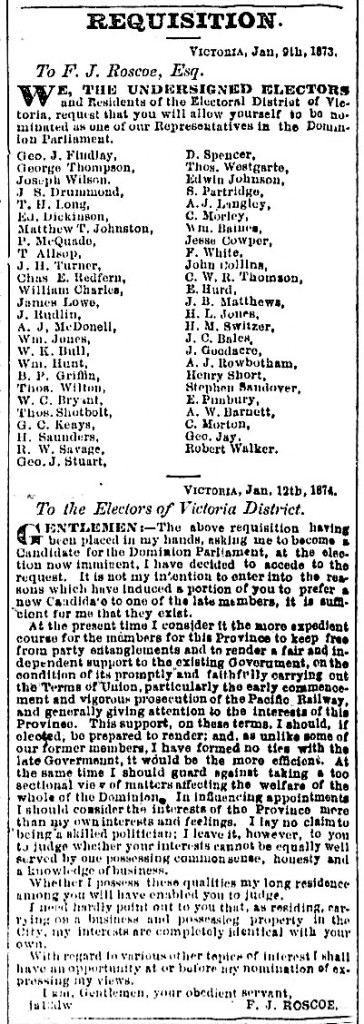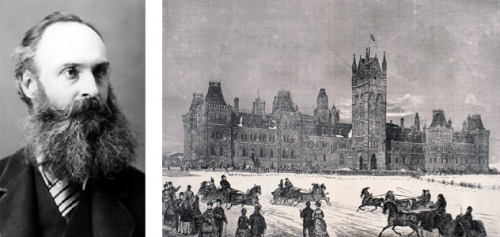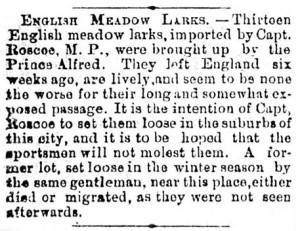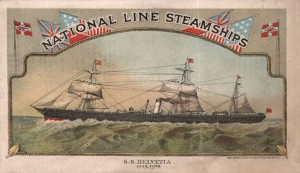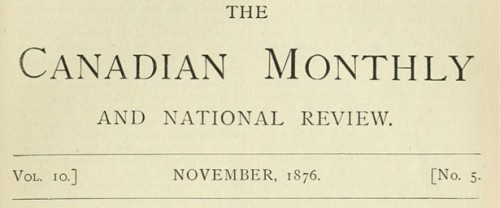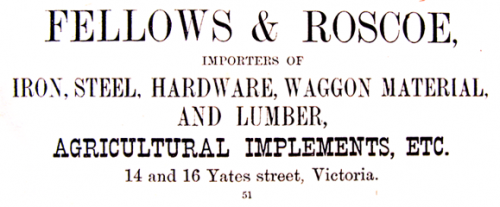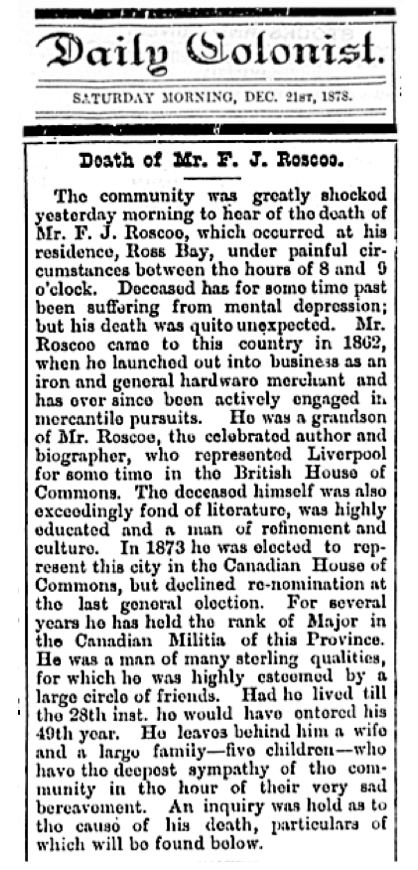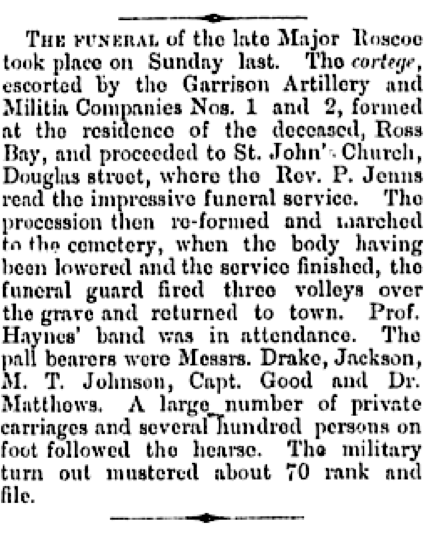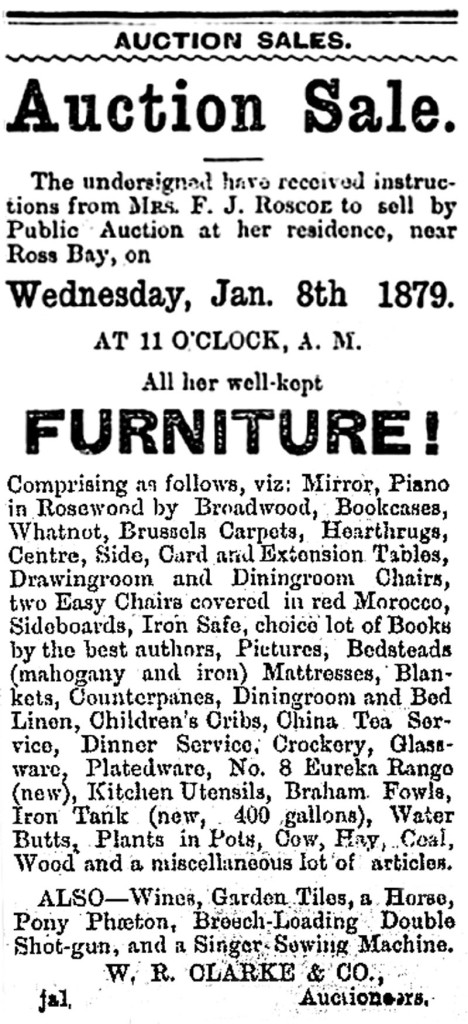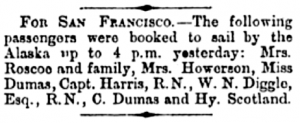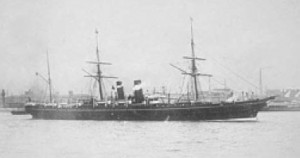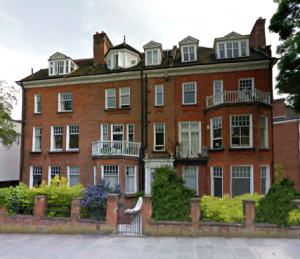History
“a pretty cottage half buried in roses and honeysuckle”
Sir James Douglas, July 18, 1869
Frank Roscoe was born on December 28, 1830 in Liverpool, England, to a well-connected family that included Members of Parliament, authors, editors, scientists and illustrators. (Please see “The wider Roscoe Family” in the ‘History’ section for his family background)
Roscoe earned his B.A. at the University of London in 1850, and got a position as a clerk at Messrs. Anderson and Hunt in London.
He left England in 1861 for a visit to the colony of Vancouver’s Island. On arrival in July, he was impressed with the country:
“There is some very beautiful scenery near Victoria & the scenery in British Columbia is as fine as any in the world”.
(Letter to William Stanley Jevons, his cousin, 1862)
He returned to England around March of 1862, and through the spring, disposed of his furniture and belongings, and tidied his affairs. He left London on May 16, 1862, for New York. From there, he travelled to Panama, arriving in Aspinwall. He crossed the Isthmus on the new Railroad (opened 1854) arriving in Panama City. From there, he took a ship to Acapulco; Sacramento, and San Francisco. He returned to Victoria – arriving on July 2, 1862 – on the new steamship, the S.S. Oregon.
On his return, he lived at first on Pioneer Street.
Frank Roscoe formed a partnership in September of 1862 with Alfred Fellows establishing a hardware business called Fellows & Roscoe. The men imported everything needed by a city just establishing itself, including: stoves, brooms, pails, axes, grind stones, wooden ware, clothes pins, twine, pianos, billiard cloth, pier looking glasses, horse shoe nails, water closets, iron safes, and more.
Ad for Fellows & Roscoe – 1863 B.C. Directory
In 1864, Frank Roscoe returned to England to marry Anna Letitia Le Breton, the daughter of a barrister-at-law. The wedding took place on November 22, 1864, in Lime Regis, England.
Frank J. Roscoe and Anna Letitia Roscoe in 1864, the year of their marriage.
The couple returned to Victoria in 1864, initially living on Pioneer Street, but wanting their own household, moved to Ross Bay Villa, in the first half of 1865.
Probably designed by local architects Wright and Sanders, Ross Bay Villa was built in a modest Gothic-revival style in 1865 on property – latterly occupied by Fairfield Farm – out in the country amid open fields scattered with native plants and tall fir trees. A tender notice for a “suburban residence” appeared in the Chronicle on April 26, 1865 by architect John Wright, and may be for Ross Bay Villa.
Two nearby streams flowed into the ocean which was just a short walk away. An entry hall, drawing room, dining room, three bedrooms and a kitchen and a small servant’s room completed the modest residence. Tall 12-foot ceilings, two fireplaces and a bay window in the drawing room gave an air of refinement to the dwelling.
Mrs. Roscoe soon recorded a happy event:
“Maisie, [Mary Letitia] the eldest child of Frank and Letitia Roscoe was born at Ross Bay Victoria Vancouver Island on Aug 18th 1865 on a Friday at 6 P.M.”
Dr. Trimble and old Mrs. Bond, the nurse, assisted with the birth.
“Maisie was a little dark thing with a tuft of hair which would stand up on the top of her head.”
Mrs. Roscoe further recorded:
“Maisie was christened in the Drawing Room by Mr. Garret” on January 25, 1866.
The Rev. Alfred C. Garrett, B.A., Principal of Indian Missions, and a Church of England minister was a friend, and like Roscoe, a supporter of Confederation with Canada.
Daughter Katherine was born at Ross Bay Villa on October 29, 1866.
Frank Roscoe left for England on February 22, 1868 for an extended trip. While he was away, Mrs. Roscoe was assisted by Mrs. Tye, who stayed with her at Ross Bay Villa. Roscoe left England via Liverpool on the City of Paris, arriving in New York on August 29, 1868, and he returned to Victoria on October 11, 1868. (Mrs. Roscoe’s diary)
The City of Paris
While in London Roscoe wrote letters asking for support for the Vancouver Island Volunteers Corps. He asked for a set of “Targets for Rifle Practice”. Roscoe’s letter was forwarded to the War Department in London.
Referring to Ross Bay Villa in a letter written to his daughter on July 18, 1869, Sir James Douglas, the Colonial Governor of Vancouver’s Island, wrote:
“You should see the crops on Fairfield, waving Corn fields have replaced the graceful willows…You would now look in vain for the wild flowers, the moss-covered roots and pools of stagnant water that once flourished there – these have all disappeared and orchards, gardens, and human dwellings, crop up on every side around one vast field of corn in the centre. Do you remember the day we broke down the Beaver dam and let out the water from the swamp on the further side of Fairfield near Mrs. Ross’ howse [sic] – There is now a pretty cottage half buried in roses and honeysuckles almost on the spot; occupied by Mr. Roscoe (& Fellows).”
On Thursday, August 5, 1869, son “Franky born at 8 P.M.”. The new baby, Francis Aiken Roscoe, Frank and Letitia’s first son, was baptised on October 8, 1869.
In 1870, Mrs. Roscoe remembered that we:
“had a very gay summer. Mr Musgrave was governor, & we went pretty often to Government House.”
Sir Anthony Musgrave, the last crown governor of British Columbia, would go on to become governor of Queensland, Australia.
The Roscoe family also went on “pic-nics” at nearby Foul Bay, and spent 10 days at Thetis Cottage on Esquimalt harbour that summer.
Thetis Cottage with the Arthur Fellows family
B.C. Archives A-02145
Their servant at Ross Bay Villa that year was Ah Chin, a
“Chinaman …who was so nice and kind to the children”
Roscoe was now in partnership with Thomas Hickman Tye, Alfred Fellows having retired from the hardware partnership.
Frank Roscoe helped to celebrate Confederation Day on July 20, 1871, organizing and paying for the fireworks display at Medana’s Grove in honour of the great event of British Columbia joining Canada:
At Medana’s Grove [in James Bay] which:
“was illuminated by Chinese lanterns, oil lamps, etc. (so that Vauxhall, in miniature, was presented to the minds of Londoners)”“About nine o’clock the fireworks were announced. Mr. Roscoe, an energetic member of the Committee of the Institute, superintended the display of pyrotechnics. These, along with the balloon ascent under Mr. Howse of the Land and Works office, were very successfully carried through. The first mentioned gentleman prepared at his own expense, and with his skill, the larger portion of the fireworks which were exhibited. A number of signal rockets were presented by the Admiral, and they received the plaudits of the lookers-on.”
Victoria Daily Standard July 22, 1871
In 1872 Roscoe’s partnership with Mr. Tye was dissolved, and once again Roscoe was in partnership with Alfred Fellows. In 1873 Roscoe was appointed to be one of three members of the Court of Appeal for the Road and Wild Tax; he was also appointed to be a member of the Court of Revision.
On August 29th of 1872 another daughter, Millicent, was born at Ross Bay Villa. She was baptized on September 19 , 1872. In July of 1873, older sister Maisie came down with the “beginning of scarlet fever, which was fortunately a very slight attack”, but the baby (Milly) went “with Caroline to stay with Mr. Good” to keep her out of harm’s way. (Caroline was a “nurse-girl” hired by Mrs. Roscoe who “turned out such a deceitful bad girl, but who had a nice face and manners”)
In January of 1874, Roscoe was asked to stand for one of two seats for Member of Parliament for Victoria:
Colonist, January 8, 1874
Election support for F.J. Roscoe (Colonist January 13, 1874)
Francis J. Roscoe:
Elected to Parliament – January 22, 1874
Member of Parliament 1874 to 1878
Left: Frank Roscoe, M.P. 1874 – Library and Archives Canada Photographer: Wm. James Topley
Right: The original Parliament Buildings, Ottawa, in the 1870’s
Francis James Roscoe left for Ottawa on January 22, 1874. He travelled with the rest of British Columbia’s members of the Canadian Parliament: Amor de Cosmos, M.P. for Victoria; Senator Cornwall from Ashcroft; Senator Macdonald from Victoria; Arthur Bunster, M.P. for Vancouver [Island]; James Cunningham, M.P. for New Westminster; and Edgar Dewdney, M.P. for Yale.
The men all travelled by the steamship Prince Alfred to San Francisco. From Oakland, they caught the American trans-continental railroad (formed of the Central Pacific Railroad; and the Union Pacific Railroad; to Chicago) just completed in 1869. The great enterprise would have been inspected carefully by the seven men as the Canadian government was contemplating how to join Canada by a new railway, as promised by the Terms of Union, agreed to when British Columbia joined Confederation in 1871.
After his first trip to Ottawa as an M.P., Frank Roscoe returned to Victoria in June of 1874 and attended several heated political meetings where the terms of Confederation and the benefits of that partnership were debated. This debate would continue for the next few years. The progress of building the Canadian Pacific Railway was of particular interest, as it had been included in the Terms of Union.
Roscoe maintained:
“I said…what everyone knows to be the fact, that British Columbia got better terms as regards the railway than our own delegates were prepared to ask; and that this was the reason why we should not be too exacting in regard to the time fixed for the commencement of the railway.”
Yours, F.J. Roscoe”
Colonist June 21, 1874
In Victoria, on March 21, 1874, Mrs Roscoe advertised in the Colonist for a “Nurse-girl” – to assist with the children and the running of the household while Frank was in Ottawa attending Parliament.
While he was in Ottawa in the Spring of 1874, Frank Roscoe arranged to import thirteen “English Meadow Larks” to Victoria to be released:
On January 11th of 1875, the whole family travelled to New York. Once there, Frank left the family in New York so he could attend Parliament in Ottawa. On January 29th, Letitia and the children boarded the City of Brooklyn for England to visit family for the summer. On April 4, Frank boarded the same ship in New York, joining his family in England on April 20. They returned, with Arthur Fellows, on the hybrid steam/sail ship S.S. Helvetia from Liverpool to New York , arriving on September 9, 1875. There, they visited Central Park and boarded the train for San Francisco, and a steamer back to Victoria, returning to Victoria on September 9, 1875.
S.S. Helvetia
In April of 1876, Roscoe had again been in Ottawa, attending to Parliamentary duties. He travelled back from San Francisco on the S.S. Dakota.
In May of 1876 Roscoe received advice from Ottawa on his promotion to the rank of Major in the Canadian Militia forces. As established by the British North America Act of 1867, the defence of Canada was to be based on an active militia system, and supported by Imperial forces in the form of regular British troops. In 1868, a Canadian Department of Militia and Defence took charge of the way the Militia was organized.
In November of 1876, Roscoe wrote for the Canadian Monthly and National Review. In a lengthy article titled “British Columbia, and its Relations to the Dominion”, Roscoe revealed his political views, and hopes for British Columbia within Confederation.
Regarding the future of Canada:
“Has she the capabilities of becoming a great powerful nation, or must she make up her mind to be ultimately swallowed up by the United States? There is good reason to fear that if the provinces which now compose the Dominion had remained separate, the latter would have been their fate, and it was Confederation alone which gave Canada a chance of avoiding that danger.”
He was optimistic about the agricultural future of British Columbia, and noting the types of soils, forecast “numerous vineyards…[and] excellent quality of wine”.
Roscoe further wrote of the potential riches of the forests and mineral resources of the new province, and considered the need for assistance from England “to cope with this great enterprise”.
Importantly, even two years after Roscoe was elected, the Canadian government was still seen to be stalling on the construction of the transcontinental railway. An appeal was even sent to Queen Victoria.
Roscoe had learned more from his two years in Ottawa. The unfair crux of the matter was that the Terms of Union with Canada had stipulated that the government would build a railway to the Pacific within ten years. This condition had been passed by the House of Commons in a resolution five years earlier, on April 1, 1871.
Roscoe clarified the situation in his article:
“Nine days afterwards, when these terms had gone beyond their control, the House passed another resolution to the effect that the railway was to be built by private enterprise, and the construction was not to increase the then rate of taxation. The people of British Columbia received the Terms of Union and went to the polls to vote for Confederation, in utter ignorance of the subsequent resolution of April 10, which to their great astonishment, they learn is now to be taken as part of the terms of the Union.”
Roscoe railed about the unfairness of the situation, and he subsequently fought for the completion of the railway under the Terms of Union that British Columbia had expected after the people of British Columbia had agreed to join Canada. [Note: The Canadian Pacific Railway finally arrived in Port Moody in July, 1886. The line was extended to Vancouver by May of 1887]
Roscoe travelled to Ottawa many times during his time as a Member of Parliament. In 1877 and 1878 he left us with diary entries, which give us a clear impression of the time requirements of travel in the 1870’s: [edited]
1877
January 31: Left [Victoria] in the City of Panama
Feb. 4: Got in to San F. [Francisco]. at 7am to Occidental Hotel
Feb. 6: Left S.F.
Feb. 13: Got to Ottawa at 9A.M. to old lodgings
Feb. 17: Saturday skating party at Rideau [Hall]
Feb. 27: dined at Govt. House with Cornwall [Sen. Clement Francis Cornwall from B.C.]
Feb. 29: went to Montreal with Aylmer [Henry Aylmer, Liberal M.P. elected in 1874]
April 2: Back to Ottawa
April 20: left Ottawa at 10 P.M. with Cornwall
April 24: Snowed up on summit of Rocky mountains [on train]
April 26: got to Ogden [Utah] late for train, walked through town with Cornwall
April 28: Got to San F., to Woodward’s Gardens with Cornwall
April 30: left in City of P.
May 5: got in early in morning [to Victoria]
May 6: S. Cornwall and C. Brodie to dinner [at Ross Bay Villa][C. Brodie was a clerk, and a friend, residing nearby]
Woodward’s Gardens. San Francisco’s first Amusement Park. Stereoscope view.
1878
Roscoe returned to Ottawa in 1878. Some highlights from his diary for that year include:
February 12: Arrived at Ottawa at 8 in the morning
February 27: [Frank Roscoe attended a] Ball at Rideau [Hall]
March 2: Dined at McKenzie’s – Smith, Fortescue, Richards, Powell & Sir John [A. Macdonald]
March 8: Dined at Govt. House
March 9: Dined with Mr. Broughton at Rideau Club.
May 1: Left Ottawa with Cornwall & McDonald
May 8: Got in to San Francisco. Evening with Cornwall and McDonald
May 10: Left in Dakota
May 13: Got into Victoria at 7 home to breakfast
Throughout his time as a Member of Parliament, Fellows and Roscoe continued with their hardware business:
Advertisement in 1877-78 Hibben’s B.C. Directory
In 1878, the Roscoes had another son. Thomas LeBreton Roscoe was born in August at Ross Bay Villa, and, as noted in the Diary, christened by Mr. Mason on October 8, 1878. Frank and Letitia now had five children.
In 1878, Frank Roscoe declined a nomination to be re-elected as a Member of Parliament. He had represented Victoria in Ottawa for 1699 Days (4 years, 7 months, 25 days). He ceased to be a Member of Parliament on August 26, 1878.
The next election for Parliament was called for September 17, 1878. Though Sir John A. Macdonald’s conservatives swept the election in Ontario and Quebec, Sir John lost his own seat in Kingston. Looking for a safe seat, Victoria was chosen, where the election was held on October 21, 1878.
With Frank Roscoe’s seat being available, there was support for Macdonald in Victoria, as shown by the following excerpts from the Daily Colonist:
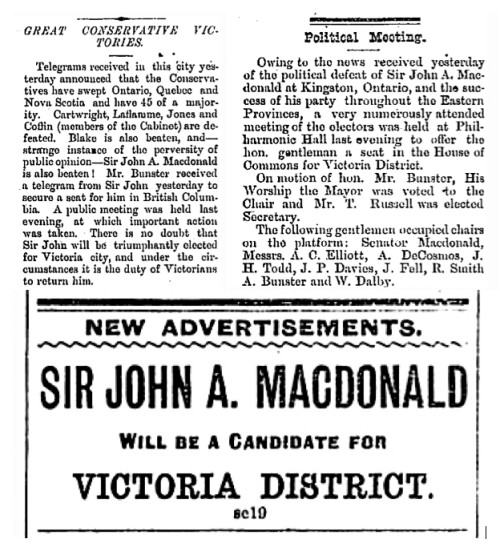
Articles and advertisement from Daily British Colonist
September 19, 1878
The results of the election held on Monday, October 21st, 1878 saw Amor DeCosmos returned as Member of Parliament, for one of the two seats for Victoria, and Sir John A. Macdonald elected – although he had never visited Victoria – to fill the vacant seat that Roscoe had left empty when he resigned.
From his resignation from Parliament in August, and through the autumn of 1878, Roscoe suffered from depression after leaving Ottawa, and on December 20th, 1878, Francis James Roscoe died at Ross Bay Villa at the age of 48.
The funeral left from Ross Bay Villa, went to St. John’s Church downtown, and returned for the burial in Ross Bay Cemetery, across the street from Ross Bay Villa.
Francis James Roscoe was buried on Sunday, December 22, 1878. A large number of private carriages and several hundred persons on foot followed the hearse to the cemetery. About 70 members of the military attended. The funeral guard fired three volleys over the grave before returning to town.
After Frank’s death, Anna Letitia Roscoe decided to return to England. She gave away possessions and sold the rest of the contents of Ross Bay Villa at Auction on January 8, 1879:
The Auction List has provided Ross Bay Villa’s volunteer Furnishings Committee with direction as to how Ross Bay Villa was originally furnished when the Roscoe family lived there. Several items have been obtained which match the auction list. One piece of furniture – a Gothic-Revival bookcase – is original to the house.
Mrs. Roscoe wrote of her changed circumstances early in January of 1879:
“First year of lonely wretchedness staying in our changed and desolate house, our happy home for thirteen & a half happy years”
1879
Jan. 5: Last day at home. Snow and Rain.
Jan. 6: At the house preparing for sale.
Jan. 7: Preparing for sale. Mrs. Fellows helped, lunched with Mrs. Johnston. Last day at Ross Bay. Drove back in Paris Carter’s Carriage
Jan. 8: Sale. Wet day. Lunched at the Drakes.
Jan. 9: Packing up. Mrs. Miles and Mrs. Hounslow helped.
January 10: Mrs Roscoe leaves Victoria:
Mrs. Roscoe and the children left Victoria on January 10, 1879 on the S.S. Alaska – a wooden side-wheeled steamer – for San Francisco. The trip was rough and everyone was sea-sick. Four days later, on the 14th, the ship reached San Francisco.
They stayed overnight and left the next morning on the Central Pacific Railroad. The baby – Thomas – was ill on the trip, and the train was delayed by snow. Through Chicago, Niagara, Syracuse and finally arriving in New York on January 22, the family made their way to the Park Avenue Hotel for two nights.
On January 24, Mrs. Roscoe and the children, helped by a cousin, boarded the City of Chester. The ship left on the 25th, but lost its rudder in the night, and had to return to New York, getting back on the 29th. Two days later, they procured passage on another ship – the City of Montreal – and once again left New York.
City of Montreal
That voyage was also rough. The family was again sea-sick. Finally, the ship arrived in Liverpool on February 11, where – thankfully – friends met the family and took them to Hampstead. They stayed with friends and family for some time.
After several months, Mrs. Roscoe found a nearby house at 5 Willow Road, where she lived with her children and a servant. The house was a lovely, new, red brick, Queen Anne style house, built in 1878, that looked across the street to a grassy slope and trees across the road – the edge of Hampstead Heath – giving a wonderful country atmosphere to the views from their new home. From the rear of the home were spacious views over the back gardens of neighbouring homes, and glimpses of rooftops of Georgian houses on the next street.

4, 5, and 6 Willow Road, Hampstead, London. Mrs. Roscoe’s home was the centre of the three houses, (No. 5) with the white door and the short bay window, with balcony above, to the left.
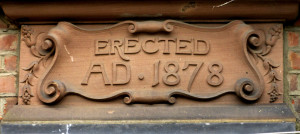
The three houses were built in 1878, shown by the date plaque over Mrs. Roscoe’s front door.
To bring the story up-to-date, next door to 5 Willow Road is 2 Willow Road – a modernist property preserved as a historic house museum by the National Trust. Built in 1939, No. 2 was designed by architect Erno Goldfinger, (and yes, there is a connection to James Bond) as a house for himself and his family. It is open to the public. When visiting, look next door, and think of Mrs. Roscoe.

Numbers 1, 2 and 3 Willow Road. The National Trust owns No. 2 – the wider centre house (centre three of the top windows, down to the ground)
But back in Victoria in 1879, Ross Bay Villa would soon acquire new residents.
Please see the section on “Other Ross Bay Families” under ‘History’ to learn their stories.
Article © Ross Bay Villa Society

